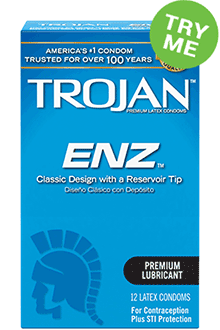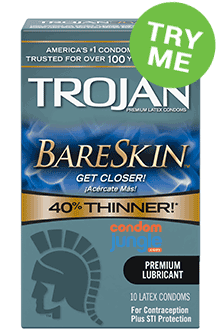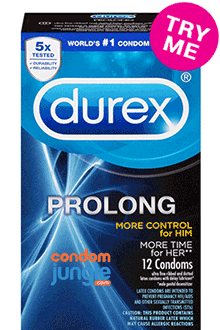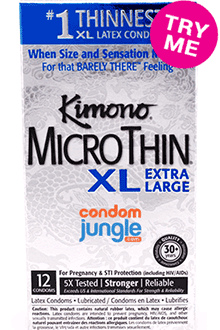Natural Latex Condoms A.K.A. Rubbers Prevent and Protect

People across the world refer to natural latex condoms as ‘rubbers’. Considering their main ingredient, this perfect synonym for prophylactics retains its popularity decade after decade.
In fact, guys spanning all age groups use this nickname all the time.
- "Dude, did you use rubbers"?
- "Do you have some rubbers"?
- "I love these rubbers."
- "I don't do it without rubbers."
- "I have to start using rubbers."
- "Damn, I have no rubbers."
- "Where do I buy rubbers?"
You get the point-- the list could go on and on.
Do you know what natural latex condoms are and why they are so useful? We answer these questions and much more. Join us as we talk about nothing but rubbers.
If you ever put on a condom in your life, the odds are very high that it was made of natural latex. These are classics, and you won't believe when we tell you how long they've been around.
Nowadays, natural rubber latex, though still heavily favored, is not the only condom material available. For this article, we stick with exploring the most classic condom material, which is natural rubber latex.
What are natural latex condoms?
Natural latex is the material companies use to make latex condoms. Latex is a natural, milky liquid material extracted from rubber trees.
Rubber trees?
Yes, you heard right. Most of us might call them that way, but the real, scientific name is Hevea brasiliensis.
Rubber trees are no shorties in any stretch of the imagination. In the wild, they can grow over 40 meters (131 feet) high. Rubber trees in plantations, however, don’t grow as tall due to the latex extraction, which affects their normal growth. It all makes sense since the latex extraction constantly restricts a part of the tree's nourishment. Tall or not, rubber trees have a life expectancy of around thirty years.
The natural substance that is the main ingredient for natural latex condoms and other latex products comes from rainforests in South America as well as areas in Asia.
A brief natural latex condom history
Condoms became widely socially acceptable in the last several decades mainly due to the AIDS epidemic in the mid-80s. People realized that the price to pay concerning their health was too significant.
It seems like a wiser decision to use a condom when the occasion calls for it, especially when there are such dependable and inexpensive "helpers" easily accessible to everybody. Though condoms can't eliminate the risk of catching STDs entirely, they very much help with protection.
The very Beginnings of Natural Latex Condoms
The year 1920 brought a new invention in the condom material manufacturing process. The suspension of rubber microparticles in water gave birth to a much safer, thinner and overall higher quality material. Before that, there was the vulcanized rubber process that was king since its invention in the mid 19th century. It was better than anything before it, but it was thick and had a strong aroma.
This new 1920 invention was crucial for condom making. Not only is natural rubber latex stronger but it’s also more suitable for the production of these intimate items because it doesn’t smell so rubbery.
Advantages and disadvantages of natural latex condoms
There are many advantages and also a couple of disadvantages. We are lucky to have access to quality products today. There is hardly any reason for anybody not to use condoms when the situation calls for it. Below are a few pros and cons for your consideration. In case we left anything out feel free to leave a comment below the article with your suggestions.
Advantages
- Inexpensive
- Available without a doctor's prescription
- Safe-- no hormonal side effects
- Easy to use
- Available in several sizes and types
- Help with STDs protection
- Are highly effective at pregnancy prevention
- Have a long expiration date
Aww... did we mention that condoms are inexpensive? Really, what price would you pay to keep your junk safe? Condoms area about as cheap as you can get considering their very important purpose.
Disadvantages
- There are hardly any reasons, except…
- If you are sensitive to natural rubber latex. If you are then there are non-latex options for you
Natural rubber Latex Condoms allergy
Some people develop sensitivity to natural rubber latex. The signs of allergy symptoms vary from small to possibly more severe. Some natural latex allergy symptoms include redness, itchiness and even a runny nose. We talk about these more in the non-latex condoms article so check it out as well.
It goes without even saying but we will say it anyway. If you experience an allergic reaction to the latex material, try using a non-latex alternative and also talk to your doctor for advice.
Examples of natural latex condoms
Practically every condom brand on the market offers natural latex condoms. They are available in a variety of types, shapes, and sizes. See a few random examples below.
Trojan ENZ Lubricated
Trojan ENZ Lubricated is a classic, straight-wall lubricated condom.

Trojan BareSkin
Trojan Bare Skin is the thinnest condom Trojan makes. It's 40% thinner than their other standard condoms.

Durex Prolong
Durex Prolong gives men more control over their ejaculation by being lubricated with a genital desensitizer.

Kimono XL
Kimono XL is just what its name says, extra large but that's not it. It's also ultra-thin for maximum sensitivity.

Expiration
Now that you have an idea of what’s available, don’t forget that natural latex condoms have an expiration date. Both the retail box as well as the condom wrapper reflects this information. This ‘designated date’ helps you know if the condom is still good when you decide to use it.
Just remember, even if the shelf life is still good based on the date, the rubber may not be. This can happen, for example, if you store your condoms in a hot or cold place for a prolonged period.
Quality Control
Condom quality control plays the most crucial role in the manufacturing process, from latex tapping all the way through the final stage of packaging.
The FDA categorizes condoms as medical devices (class two). This U.S. government agency sets up the standards for, and oversees the production of, condoms to ensure high quality.
Take away
Natural Latex Condoms are a time-tested birth control device for men, used throughout the developed world since the second decade of the twentieth century. The production and quality of these sperm-capturing devices keep evolving over time, and as a result, we now have condoms of superior quality.
Bottom line: if you want to use condoms, give Natural Latex a try. You get the most options by far along with the protection you demand.
